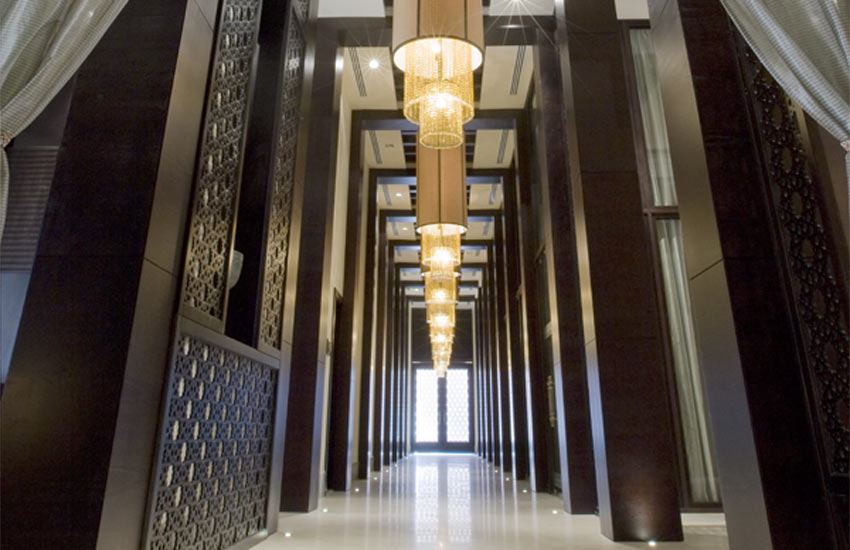Sustainable solutions
Architrave made a point of utilising locally-produced materials and locally-based suppliers. Flooring, cladding and wall tiles were made by RAK Ceramics, for example, while natural stones for bars and water features were extracted from local quarries. Other suppliers included AMS Joinery, Thermavium, RAK Luminar, Bose, Ginox, Promorak and RAK Aluminium Fabrication.
The designers were also conscious of making the resort as sustainable as possible. Showing respect for the natural environment was of vital importance, so villas were build in neutral tones to ensure that they blended seamlessly into the desert backdrop. Meanwhile, the landscape was kept as natural-looking as possible, through the planting of typical desert flora such as cattails, ghaf trees and sidr trees.
In the villas, sliding, full-length windows allow for natural ventilation and reduce the need for reliance on air-conditioning, Barclay explained. “Waste water collected from the resort will undergo a reverse osmosis process so that it can be pumped into the reserve’s water-hole, as well as used for landscape irrigation. Apart from establishing water flow control systems and utilising energy-saving light bulbs, a recycling centre will be set up on site, segregating all waste material,” he continued.
The team were already dealing with a site that had no existing infrastructure to speak of, which presented a whole host of challenges. Using building methods that were as unobtrusive as possible was the cause of further complications.
“There was no existing infrastructure to support such a sprawling villa property, so necessities such as plumbing and roads were built from scratch. Due to the remote location of the resort, the limited access meant that we had to construct a new road from the main highway.
“In wanting to maintain the site naturally, we had to be more sensitive with the type of equipment we employed as well as in the careful preservation of the natural vegetation of the desert. We planted an additional one thousand ghaf trees, sidr trees and local grasses throughout the site. Unobstructive fences and walls to keep the protected wildlife had to be built and constructed in such a way so as to blend seamlessly with the desert landscape and not noticeable,” Barclay detailed.
The end result is a viable reaffirmation of the principles that were laid down all those years ago on a polluted, acid-laden beach-side site in Phuket.

| Advertisement |









 Search our database of more than 2,700 industry companies
Search our database of more than 2,700 industry companies









